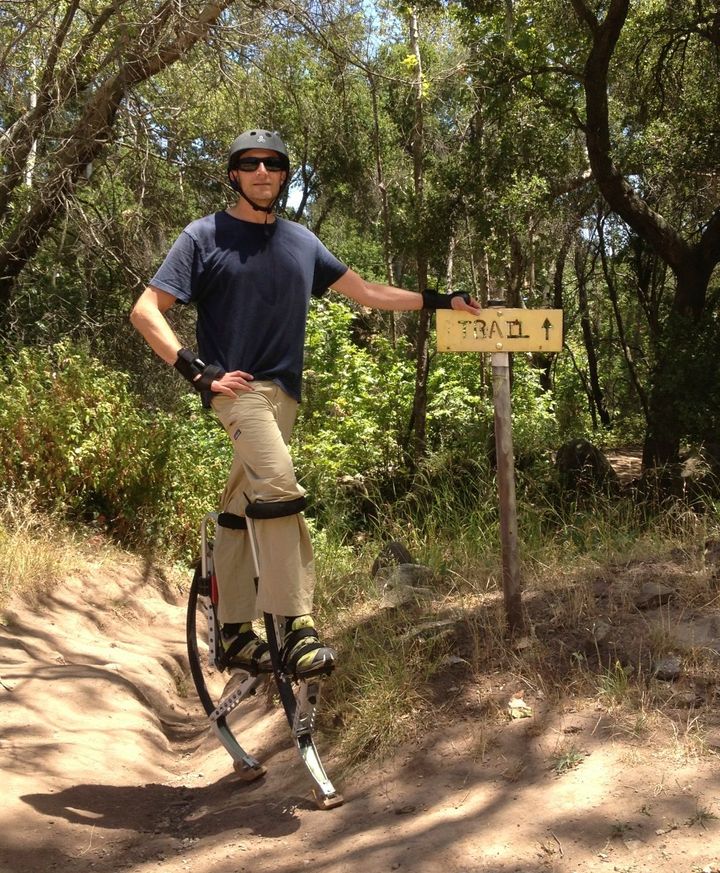
I Will No Longer Fail My Clients
Confessions of a Fitness Trainer
There are roughly a quarter million fitness trainers in the United States today, of which I am one. Sure, we use different titles, like consultant, coach or even “trainer to the stars”, but we all serve the same fundamental purpose. We help people meet and exceed their fitness goals.
I entered the business later in life, not out of necessity, but because becoming fit transformed not just my body, but my life. Understanding the myriad benefits of exercise has become a passion I want to share with the world. With my 49th birthday fast approaching, rather than being plagued with health and aging issues, I regularly invite new challenges, both physical and mental. In the seven years since I launched TravelFit, Inc., I’ve worked with many incredible clients, from CEO’s to stay at home moms and even Pre K-12 grade students. That moment when they see the results of their hard work pay off, whether on the pull-up bar, in their closet, or at the doctor’s office, reminds me why I do this. It’s gratifying and exhilarating. If I’m being completely honest though, those moments don’t happen nearly as often I’d like, and if all fitness trainers are being equally honest, they know what I mean.
Far more often, a client will cancel a session or arrive late. Then it happens again. Before you know it, they stop scheduling appointments altogether. I don’t care who the trainer is or how good they are, this is the nature of the beast. There are several research studies providing evidence that most people fail to meet their fitness goals. In fact, most fail to get much beyond buying the outfits, which is why roughly 28% of Americans are categorized as obese. The CDC says more than 70% are technically overweight. In spite of the proliferation of trainers, gyms and workout fads, Americans are becoming less and less fit. In other words, we are failing our clients.
Of course, that’s not how we trainers see it. When a client fails to reach their goals, we tend to blame them. “I told her what she needed to do. She just wasn’t committed enough.” We’ve all had those conversations. We’ve all rationalized how our clients had failed themselves, but the truth is, it quite possibly may be the trainers who have failed the clients. It wasn’t until I took on a rather unique client that this glaring fact became obvious to me.
His name is Stephen Duneier. He has run big businesses at Bank of America and AIG, was a successful portfolio manager and founded a billion dollar hedge fund. Realizing that his formula for success has been proven, he’s recently become a popular professor of Decision Analysis at the University of California/Santa Barbara campus, and a decision strategist for a select group of high-level executives. Outside of finance, he’s known for accomplishing his new year’s resolutions (which are not of the typical kind), and blogs about each achievement. Some of this resolutions checked off his bucket list include learning fluent German, fly airplanes aerobatically, earn an auto racing license, read 50 books in a year, become a Yarnbomber (he’s known globally-google it), fly helicopters, skydive, unicycle, slackline, parkour and hike mountains wearing jumping stilts (google them!). You get the picture; he’s ambitious. He also happens to be a childhood friend of mine.
I was honored when he came to me to help him develop six pack abs. After all, having a long history of setting goals and doing whatever it takes to achieve them, he’s my ideal client. Since he lives on the other side of the country, I figured all I’d have to do is provide him with a compilation of videos showing the most appropriate exercises with correct form and voila, he’d be ready for casting in the movie, 300. I was wrong. Without any discussion, he dropped the goal almost immediately.
Years later I approached him for professional guidance on enhancing my business. I struggled to understand why so many people give up on their fitness goals, even with top-tier trainers. Given his expertise in the cognitive sciences, and the fact that he gave up on me, I solicited his insight.
He explained that the person who comes to me, the one who is bubbling with enthusiasm and motivation to lose weight and get in shape, is just one of the many decision makers who seek out my training skills. While all of my clients are decision makers, she is the most willing to make sacrifices, to do what it takes to achieve her goals. What this enthusiastic client doesn’t consider is her future self, which may be more tired, more hungry, more stressed or more distracted by work, family and life in general. As a result, she won’t value the very things that are important to her in quite the same way as when she first approaches me for help. Then the willingness to make the necessary adjustments to her lifestyle wanes. Therein lies the problem (considering all the potential future outcomes).
In my mind, the ideal client is that highly motivated woman, ready to take on the world and willing to do whatever is necessary to become who she wants to be. I ignore who she has been for the 20, 30 or even 40 years before she reached out to me. I trust her word that those days are over. By doing so, I have set us both up to fail. It isn't her fault, it’s mine and I must own this. Stephen explained that it doesn’t have to be this way. In fact, a marginal adjustment to my decision making process is all that is required.
As it happens, there are two things that the woman who walked into my office shares with every one of those future versions of herself. They are the habits she has developed over the course of her entire life and the passions that inspire her to take action. If I could somehow seamlessly incorporate those into her new, healthier routine, the odds of her achieving her goals go up dramatically. Then we both succeed!
This is Stephen’s secret to achieving really ambitious goals. He knows his tendencies and his limitations. While the rest of the world thinks of him as incredibly disciplined, he knows the truth. Rather than pretending that all of his bad habits will suddenly disappear simply because he sets a goal for himself, he takes ownership of them. He acknowledges his limitations and plans accordingly. Interestingly, he says that he knows whether he will succeed or fail almost immediately. It all comes down to what he calls “Bija” or seeds of thought.
The very first step in his process involves breaking the goal down into all of the tiny little decisions that will need to be considered along the way in order for him to achieve the outcome he desires. Let’s explore his pursuit of six pack abs to clarify this point. What you and I call exercise, Steve calls decisions, but because an exercise can be further broken down into progressions, it isn’t quite Bija. There is the decision to pursue a six pack, which is broken down into decisions regarding food intake and physical exercise, both of which can be broken down into more specific decisions, such as who or what to reference for appropriate fitness routines and specific exercises. How many reps? Where will they be done? How important is form? How often must they be done? If every last detail of the prescribed routine is followed, what are the odds of success and over what time period?
Now here is the part we tend to ignore. Given the prescription that offers the best of odds of success, what is the probability he will actually follow it? Before that can be answered, it must be acknowledged that he currently has a routine comprised of eating habits, tastes, physical activities and interests. It also must be accepted that the current combination has not resulted in the desired outcome. Therefore, one, some or possibly all of them must be altered in order for him to develop a six pack. Optimally, he seeks a combination of the fewest adjustments and/or the easiest ones to implement, that will result in the desired outcome.
It was during this planning phase that he had come to me for advice. The reason he had dropped the goal was because every resource, including me, suggested formal exercises, which is something he loathes. Not even suggestions of 5 or 10 minute routines that could be performed at his desk made it palatable enough. He saw his hatred for exercise as insurmountable. Rather than waste time pretending that he could overcome it through sheer will and determination, like most do, he came to terms with the fact that pursuit of a six pack was likely a fool’s game, and so chose to pursue another goal with greater odds of success.
As a result of these conversations, I have made one major adjustment to my approach. Now, when I meet a new client, I recognize that the man standing in front of me is merely a representative of all the people I will be working with along the way. He appears to me as the ideal version. The one who is ready to make sacrifices and work hard. He is motivated and driven. If I am going to succeed in helping him achieve his goals, I will need the cooperation of as many versions of him as possible. This is where my approach differs from that of most trainers. Rather than planning for the optimal version, I formulate a strategy for the majority of his many versions. I learn about his fears, habits and passions, using them to his advantage. It requires that I spend time getting to know more about him than just his goals, current stats, health issues and even why he came to me. I must understand the aspects of him that he least wants me to discover, the things about him that he is trying to overcome.
As for Stephen, I have tapped into his insatiable curiosity and passion for the outdoors. We are experimenting with routines and movements that he is using on his daily hikes. With minor (unconventional) adjustments to his habits, he is able to implement effective ‘exercises’ into his regimen. As a dedicated educator and consummate student of exercise and fitness, I now understand that it is my job to adapt my expertise to the deep-rooted views of my clients, rather than expecting them to adapt to my ideal programming. Ultimately, that is how we can all stop failing our clients.

About the author:
Julie Weidenfeld transitioned from finance to fitness in 2009 to empower people to become the best versions of themselves! Her conviction in sharing the myriad benefits of exercise in transforming lives has afforded her opportunities to train a variety of populations, from youth and recovering addicts, to athletes and the aging. Coach Julie utilizes an in-depth assessment strategy to understand the past, present and future versions of each individual, as she realizes that no two people are alike in their lives and habits. Incorporating innovative technological tools along with unique compound exercises has allowed Ms. Weidenfeld to reach clients globally. Follow her on social media to learn about exercises, recipes and hacks that will elevate your mind, body and life to a whole new level!
Twitter: @CoachJulieDW
Instagram: coachjuliedw
Facebook: /Travelfit

